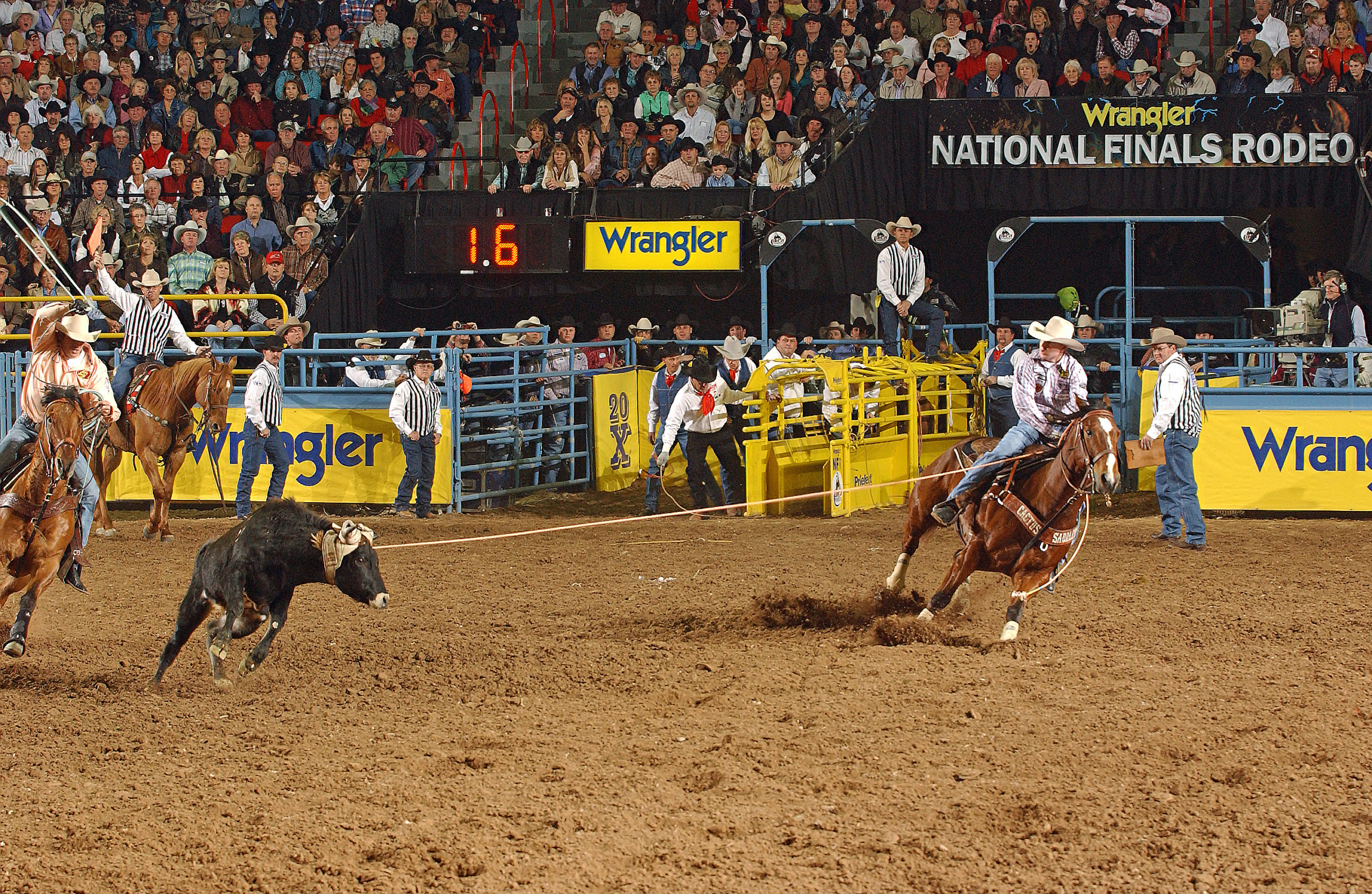The most crucial function of a head horse is setting up the corner for the heeler.
Hall-of-Famer Speed Williams—who notably started out heeling—appreciated his two iconic horses, Bob and Viper, so much in part because of their moves in the corner. “The move” of a head horse happens between the pulling of your slack and the towing of the steer. It’s much more convoluted than just “going left,” and tricky to describe in words. The perfect move treads a fine line.
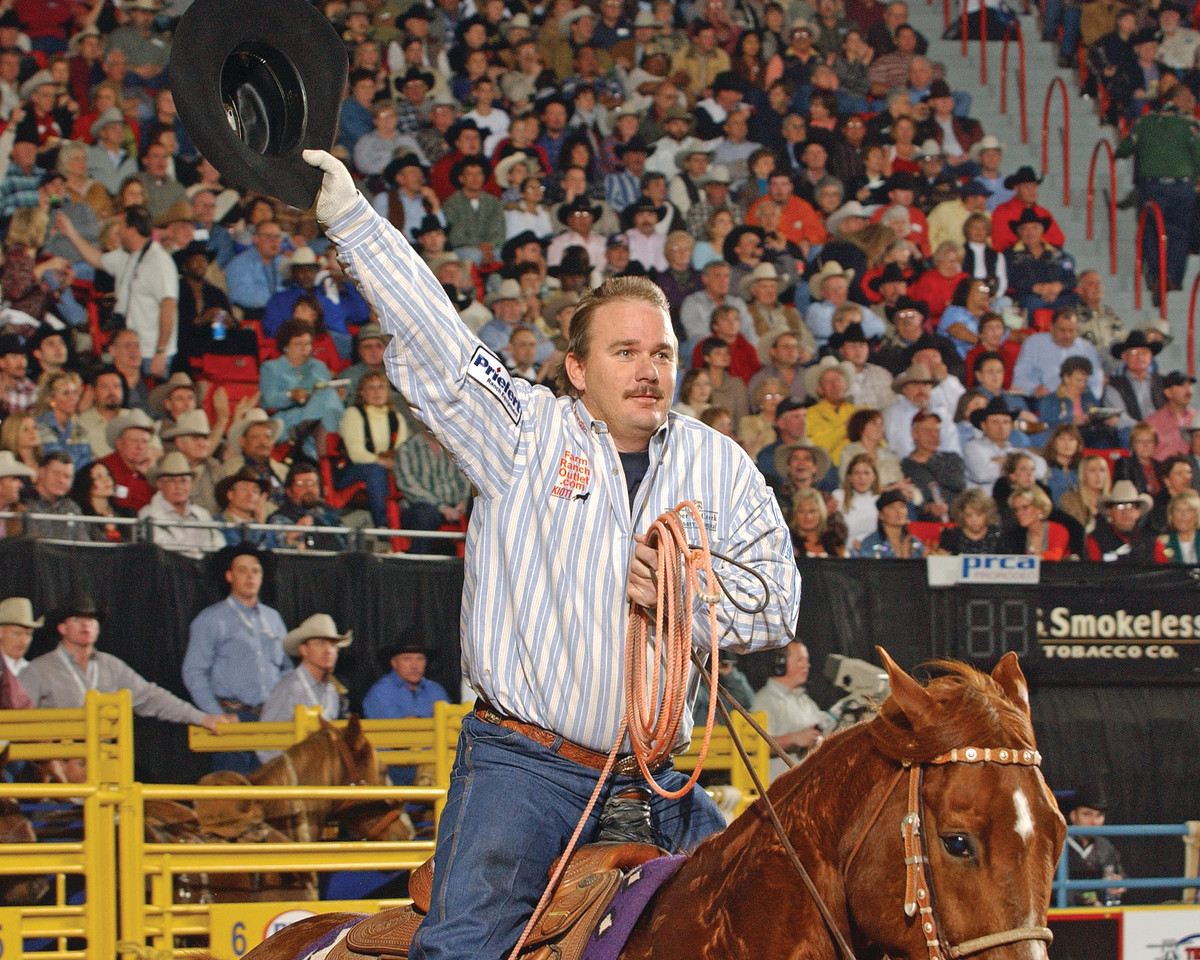
Hubbell Rodeo Photos
If your horse uses too much front end in his move, your heeler will have to wait out some whiplash in the corner because, if there’s any “hit” at all, you’ll whip the steer. But if your horse doesn’t make the right move immediately, it takes forever to provide a heel shot.
Keeping the right tension on that tow rope is the name of the game, and it’s dictated by your head horse’s footwork. For instance, if the head horse doesn’t “cow down” to the same speed the steer is running, it makes a great corner very difficult, Williams explained.
“I’ve had a lot of horses that could score, run and face, but did not provide a good corner,” Williams said. “That makes them hard to win on. You’ve got to set the cow up for your heeler. You’ve got to have one drag its left hind leg and be able to step back and bend.”
[SHOP: Speed Williams’ Team Roping Essentials]
Top Hand Rope Company Chief Team Rope
Speed Williams Team Roping for Kids Volume 1
Speed Williams Team Roping for Kids DVD Volume 2
(As an Amazon Associate, we earn from qualifying purchases made through affiliate links.)
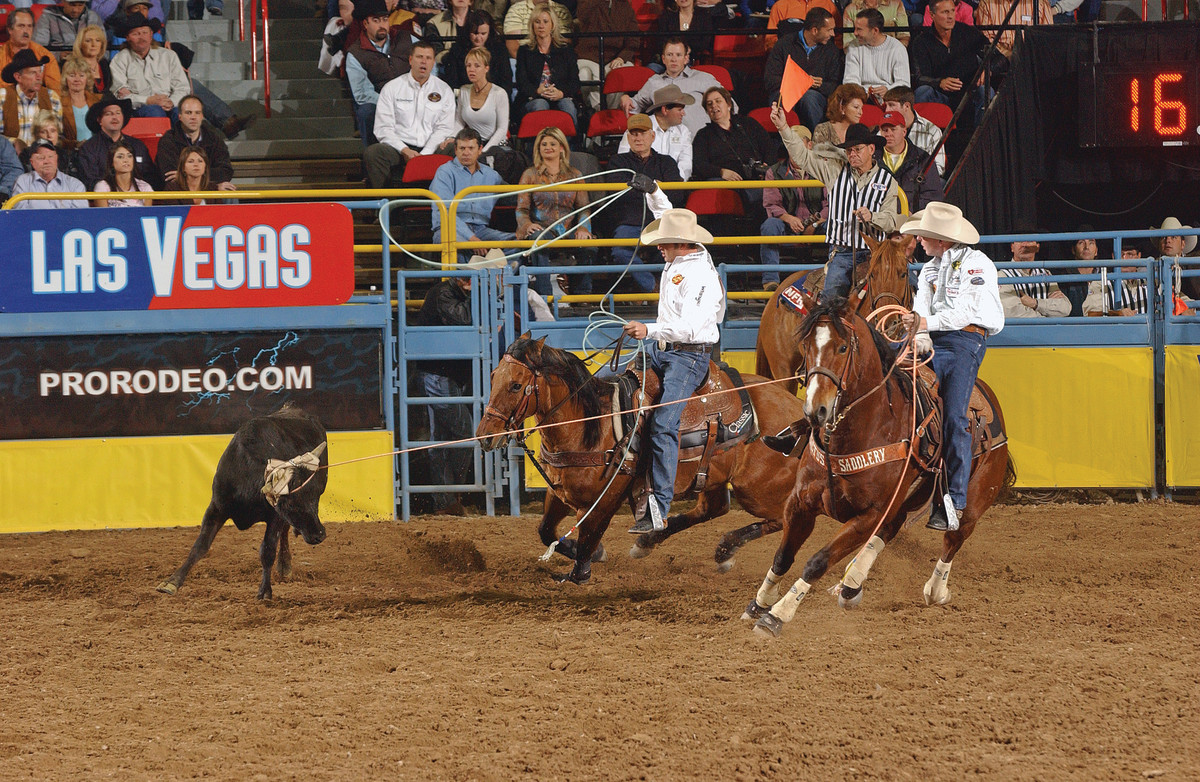
Left Hind Anchor
In fact, that one characteristic—working off that left hind leg—is essential for a great move in a head horse and, thus, a great corner. Two-time world champion header Chad Masters’ two great sticks have two totally different moves.
“Cody drug that back leg and had a feel in the move of no other horse I’ve ever owned or even tried,” Masters said. “I didn’t rodeo on Clint until he was almost 9 years old because he had a move I did not like. It was real straight. He didn’t sidepass like Cody did. He just doesn’t travel that way. But, finally, he taught me his way is easier. He stays straight and the saddle horn stays straight. It’s easier to reach that way and step out in front of a cow. Maybe I sidepassed Cody too much. And if Clint had a little more sidepass, that could help him. But you can win on them both. They both read the steer and work off that left hind leg.”
[SHOP: Chad Masters’ Go-To Team Roping Gear]
CACTUS ROPES The Future Head Team Rope
Steve Orth, who trains AQHA horses on both ends and won $10,000 heading at the Spicer Gripp Memorial this summer, said that a horse must rate with its rear end to have any kind of move.
“If your horse rates with its front end, you can’t control the steer’s head,” said Orth. “You’re going to jerk the steer’s butt away from your heeler.”
In fact, cueing your horse to get on its left hind leg is what helps you get your slack tight and then maneuver in the handle. Orth wants his horse straight, but with some give in the ribcage. He actually uses his right foot to keep his horse’s hips away from the steer, which he said helps prevent a dead spot in the corner.
“There’s nothing worse than a head horse that throws its butt to the steer—that’s a dead, dead spot and it’s like starting over, getting control of the steer’s head,” said Orth. “It feels like being stuck in mud to me.”
He also thinks you can prevent dead time in the hole if your horse is always traveling faster than the steer—but still dragging that left hind leg. Orth points to J.D. Yates’ sorrel horse Turbo, the 2018 Head Horse of the BFI, as one that can really fly, but then get on its left hind leg and control the steer’s head. Turbo isn’t very big. But too often, smaller head horses can get to playing defense.
“A lot of times their self-preservation instincts kick in and they’ll get too quick and you’ll go to missing the right horn, splitting the horns, or popping it off,” said Orth.
Patience and Placing Hops
Obviously, conformation can lead to different styles of move in a head horse. According to Masters, if you have a big sidepasser, it’s better to run higher to the steer because, “if you’re back a ways, they can get strong if you’re not ahead of every move.”
If you like to ride wide, obviously a sidepass move might work better, and you’ll simply hold up in the hole a moment. But, if you ride narrow to the steer and hold up at all, you’ll kill the steer’s momentum. It’s more about getting your horse’s body right, no matter the angle.
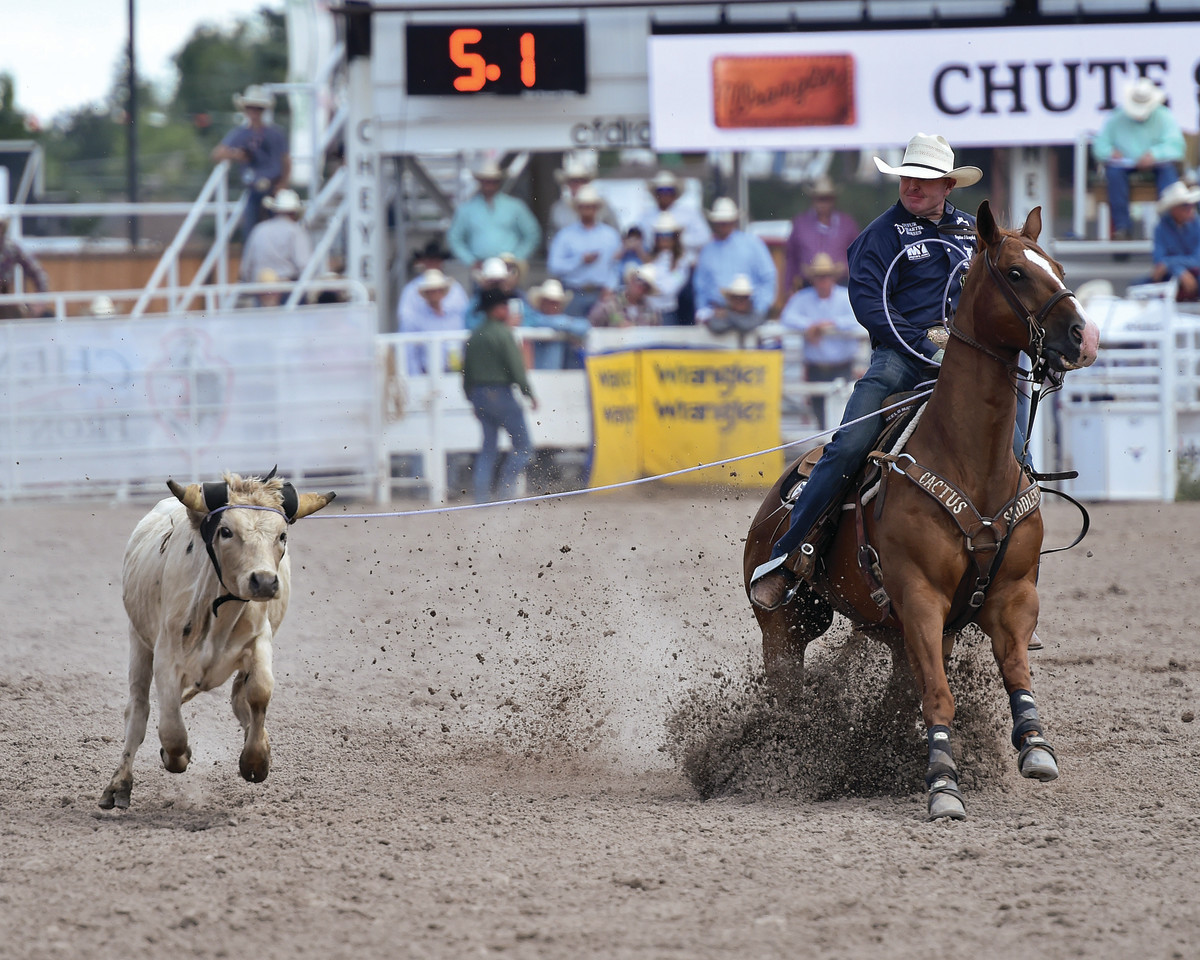
“To do it right, you’ve got to be patient right there in the corner,” said Orth. “If your horse stays to the left and rates on its butt, that steer will handle himself. Clay Smith does an outstanding job of letting the steer turn itself. There are no dead spots right there.”
Masters agrees that timing your speed and approach to that sweet spot from where you can pull the cow does take patience. A horse that drags its rear end in the move and curves its body so it’s looking back at the steer until it faces—that’s “a fun feel,” Masters admits. But today, he prefers his horses straighter in their move.
“I make sure now that I sit down before I turn off, instead of immediately crossing my left hand over my body,” said Masters. “I try to sit first, then leave straight. A lot of people still think they need to put their right foot in a horse for that sidepass. But watch Clay Smith and Clay Tryan. Both their horses stay pretty straight.”
Recent Hall-of-Fame inductee Allen Bach would agree. As the only heeler to have won four world titles with four different headers, he knows a thing or two about different corners. So, which of his headers over 30 years had the best move in the hole? That’s easy.
“Charles Pogue was so good at placing those steers’ feet,” said Bach, who noticed that every switch would happen in the same part of the corner behind Scooter. “He had the greatest horse of all time, but it was his motor skills with his feet and left hand that I credit. Charles was a great quarterback and would tell me to ride a little higher, because he was setting those feet depending on how high or far back I rode. That was so I had a chance to heel on the first jump. From the time the head rope went on until I heeled was such a fast run behind him.”
Bach attributes that to Scooter’s body being extremely framed up, from the time he was running full-blast down the arena to when he made his move out of there. Being perfectly in frame in that move means a horse doesn’t have its butt too far underneath it, nor is it using too much shoulder—either of which can wreck steers too much, Bach said.
Motor Skills
In August, defending NFR average champion heeler Trey Yates picked up header Clayton Van Aken—who’s one of the best in the country at breaking steers down in the corner. The two roped in college, and Yates looked forward this fall to redeeming himself after missing one for Van Aken at a CNFR. In the meantime, Yates comes from a family that knows a bit about the move.
“A head horse needs to be elevated in the front end with its hind end down,” Yates offered, echoing Bach’s stance on a framed-up head horse. “If the horse leads with his front end, the steer will hit kind of long-strided. If the head horse is underneath himself, it kind of picks that steer up perfect.”
[SHOP: Trey Yates’ Team Roping Tools]
Van Aken, the young switch-ender out of California, said Texas trainer Shawn Darnall got him using his feet and told him that, if you can control the head horse’s body, you can control the steer’s body.
“I don’t care what happens or how fast I’m going—I can control every step the steer makes and, honestly, I can make a guy catch or make him miss with one stride,” Van Aken said. “If my heeler is too high or too far back, I can put that steer in the right spot so he doesn’t have to worry about it.”
To do that, a horse has to listen to the header the entire time the weight is added to that saddle horn, despite previous habits. For instance, Van Aken won a round at this year’s BFI on a grulla gelding that didn’t have a great move when he bought him—he just wasn’t able to really get away from steers. On the other hand, the yellow horse Coleman Proctor bought this winter, Admiral, was getting away from them too early.
“Brye Crites was riding him when I bought him, and he throws faster than I do,” Proctor said. “The horse was stepping off early in long-score situations.”
[Shop: Coleman Proctor’s Gear]
After a handful of lost ropes, Proctor quit rodeoing on Admiral and spent several months just jackpotting. Getting on the same page with their move led Proctor to dominate at Cheyenne Frontier Days, then spin four steers in four days for Ryan Motes in a collective 18.4 seconds to grab another $11,432 at rodeos in Lawton, Sikeston and Lovington.
“Speedy helped me with so much of my big turnaround,” Proctor said of his mentor, Williams. “I wasn’t good at using my legs, and I’d been pulling on my bridle reins with my left hand.”
Once Proctor started putting his left foot in the horse first thing, looking to where he wanted to go and calming down his left hand, Admiral began waiting on him to cue the move.
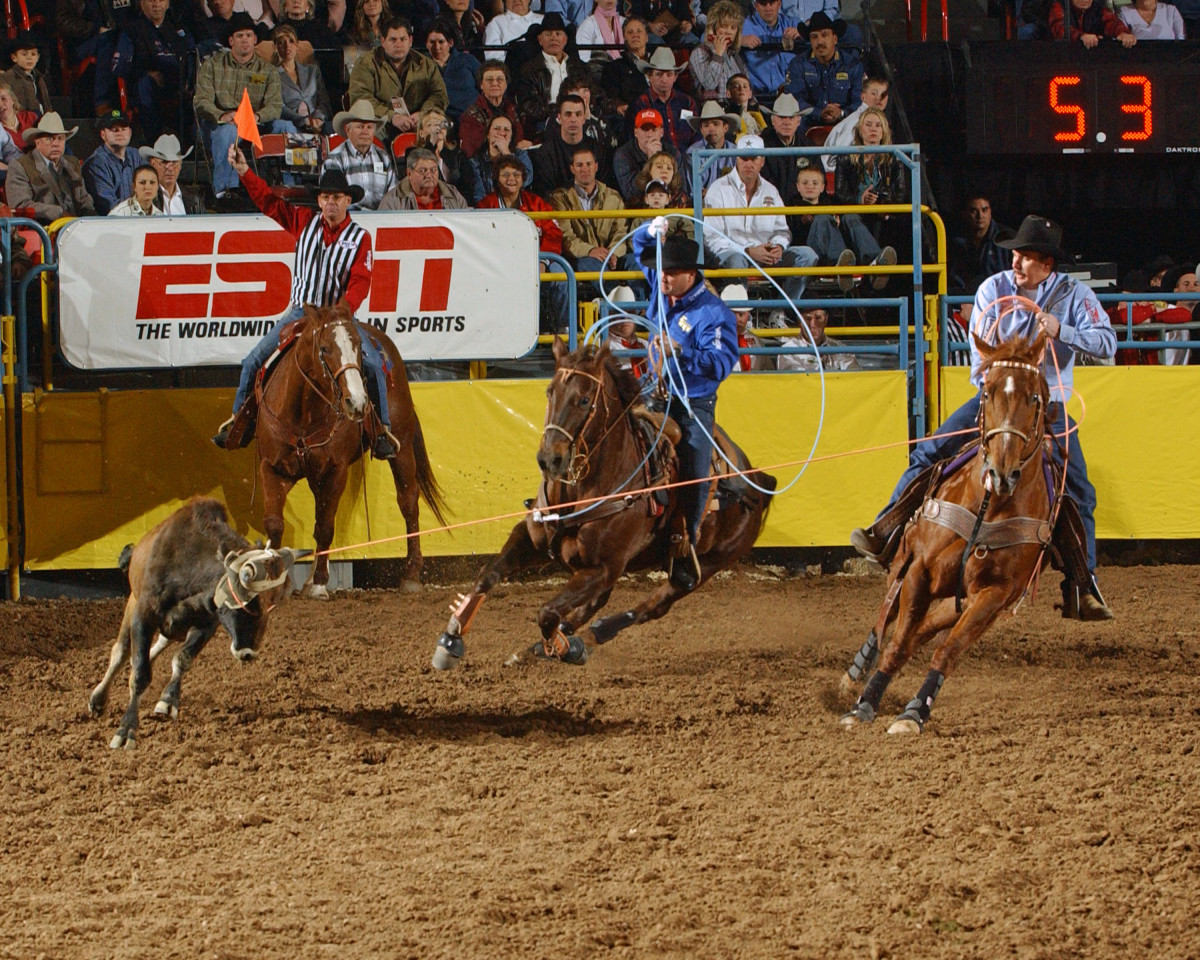
“So much of it is timing with that yellow horse,” said Proctor. “He can go from running full-tilt to stepping away from the steer. He’s not a huge leg dragger. He steps up and away from the steer, then gets that leg in the ground. Some horses that set that left hind leg and get away are so abrupt about it, but he’s just so smooth while taking control of the steer.”
Perfecting the Cues
Williams offers several videos on SpeedRoping.com that depict moves you do and don’t want to encourage in your head horse, and sells his Speed Trainer to help you work on your feet and left hand during runs. Proctor said his Speed Trainer is the single most important piece of equipment on his place.
[SHOP: Speed Roping for Kids Volume 1 and Volume 2]
“The problem with roping the dummy on the ground is you’re never accountable with your left hand and legs,” said Williams. “You never get to practice it. But you need to practice because it’s what helps you get control and provide that first hop as soon as possible. Some people take 20 feet to get a first hop and some 40 feet. This is what separates the lower- from higher-numbered headers.”
And Bach’s Smarty comes with several drills. One of Bach’s favorites consists of the header simply dallying and then undallying while keeping the horse in the same spot—and repeating.
[SHOP: Smarty’s Line of Products]
“Most people don’t realize that as soon as they rope and dally, they relax their legs and quit riding their horse, or shift their weight in the saddle,” Bach said. “The moment they go to the horn, they know the horse will be going left, so they compensate. This little drill teaches you to keep your left hand as still as humanly possible and sit really still and not offer any cue whatsoever. Just forward energy with your legs to keep the horse moving with the steer.”
Another drill for motor skills that he calls “rope, dally, follow” consists of the header following the steer two strides after dallying, to really have time to work on your horse’s move. Then you can rope, dally, and follow one jump while working on the move and, ultimately, rope, dally, and make the move like you would in a normal run.
“The separation of two strides between the dally and the move gives you time to really think about your hands and feet, and help your horse keep that same really nice move all the time,” Bach said.
You may never be lucky enough to ride a horse that is so fluid in the move that it feels truly effortless and appears that the steer turns itself but, with training aids and practice, it’s possible to set up so many fast corners that your heeler becomes known as “a catcher”—and maybe wins eight gold buckles of his own.




